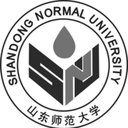An NQO1- and PARP-1-mediated cell death pathway induced in non-small-cell lung cancer cells by beta-lapachone.
Mots clés
Abstrait
Lung cancer is the number one cause of cancer-related deaths in the world. Patients treated with current chemotherapies for non-small-cell lung cancers (NSCLCs) have a survival rate of approximately 15% after 5 years. Novel approaches are needed to treat this disease. We show elevated NAD(P)H:quinone oxidoreductase-1 (NQO1) levels in tumors from NSCLC patients. beta-Lapachone, an effective chemotherapeutic and radiosensitizing agent, selectively killed NSCLC cells that expressed high levels of NQO1. Isogenic H596 NSCLC cells that lacked or expressed NQO1 along with A549 NSCLC cells treated with or without dicoumarol, were used to elucidate the mechanism of action and optimal therapeutic window of beta-lapachone. NSCLC cells were killed in an NQO1-dependent manner by beta-lapachone (LD50, approximately 4 microM) with a minimum 2-h exposure. Kinetically, beta-lapachone-induced cell death was characterized by the following: (i) dramatic reactive oxygen species (ROS) formation, eliciting extensive DNA damage; (ii) hyperactivation of poly(ADP-ribose)polymerase-1 (PARP-1); (iii) depletion of NAD+/ATP levels; and (iv) proteolytic cleavage of p53/PARP-1, indicating mu-calpain activation and apoptosis. Beta-lapachone-induced PARP-1 hyperactivation, nucleotide depletion, and apoptosis were blocked by 3-aminobenzamide, a PARP-1 inhibitor, and 1,2-bis(2-aminophenoxy)ethane-N,N,N',N'-tetraacetic acid acetoxymethyl ester (BAPTA-AM), a Ca2+ chelator. NQO1- cells (H596, IMR-90) or dicoumarol-exposed NQO1+ A549 cells were resistant (LD50, >40 microM) to ROS formation and all cytotoxic effects of beta-lapachone. Our data indicate that the most efficacious strategy using beta-lapachone in chemotherapy was to deliver the drug in short pulses, greatly reducing cytotoxicity to NQO1- "normal" cells. beta-Lapachone killed cells in a tumorselective manner and is indicated for use against NQO1+ NSCLC cancers.


